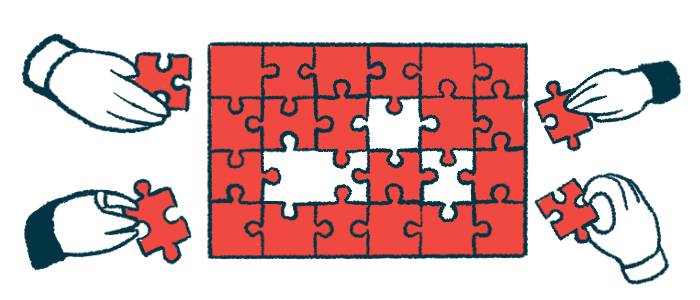Physician: Making NMOSD care more equitable is achievable
Meeting nine goals could help address diagnosis, treatment inequities

Achieving nine goals could help address inequities with access to properly diagnosing and treating neuromyelitis optica spectrum disorder (NMOSD), a Massachusetts physician maintains.
The goals were proposed by Farrah Mateen, MD, PhD, of the Massachusetts General Hospital, Boston as a personal viewpoint in the Multiple Sclerosis Journal under the title “Rectifying global inequities in neuromyelitis optica diagnosis and treatment.”
“Reframing the picture of NMO globally is now needed,” Mateen wrote. “These goals can be pursued in parallel as multiple actions will be needed by multiple parties.”
NMOSD is an autoimmune disease that most commonly affects young women. It is characterized by immune system-mediated inflammation and damage to healthy parts of the brain and spinal cord that’s most commonly driven by self-targeting antibodies against a protein called AQP4.
People with the disease can have symptoms such as vision problems or loss, muscle stiffness or weakness, and numbness or loss of sensation that can worsen with every relapse. The main goal of treatment is to prevent relapses due to the way disability worsens with them.
Until 2019, there were no approved therapies and the disease was generally managed with off-label anti-inflammatory and immunosuppressive therapies such as steroids and rituximab.
Three disease-modifying therapies — Soliris (eculizumab), Uplizna (inebilizumab-cdon), and Enspryng (satralizumab-mwge) — have been approved for AQP4-associated NMOSD in more than 60 countries.
Leveling the field to care access in NMOSD
However, access to proper diagnosis and treatment is highly unequal, with lower-income countries having no access to these therapies, which can cost up to $500,000 per patient a year.
Having access to “a consistent supply” of immunosuppressive treatments, used off-label, can also be a challenge, Mateen wrote. This can lead to no treatment, on and off treatment, under-dosing, or using less effective medications with potential risks or unwanted side effects.
“The range in possible outcomes for an NMO patient, depending on access to a correct diagnosis and therapy, is now extreme; however, disparities can be rectified to allow therapeutic advances in the field to be shared globally,” Mateen wrote.
To address inequities and improve access to diagnosis and treatment in resourced limited populations, Mateen proposed nine collective goals for doctors, researchers, patients, and other stakeholders.
First, she suggests improving access to point-of-care testing for antibodies against AQP4, which would enable physicians to confirm a diagnosis. Providing education and information to patients, including online and in remote health visits also tops Mateen’s list.
It’s also important to develop best practices and guidelines for lower-income settings to ensure access to anti-AQP4 antibody testing, one of at least two immunosuppressive treatments such as rituximab, steroids for acute treatment, and at least one yearly visit to a neurologist.
Four goals related to treatment access include: generating evidence on treatment choices and affordable medications, including those used off-label; ensuring a consistent supply of at least one immunosuppressive therapy beyond steroids; negotiating pricing; and establishing vertical programs, which refers to delivering disease-modifying therapies to patients in vulnerable situations through foundations and nongovernmental organizations. This model has been used for cancer and HIV.
“Economic modeling studies at a global level are likely to find that the patient volume for NMOSD is much smaller and the costs much fewer than other diseases with vertical chronic disease programs to date,” Mateen wrote. “Funding may come from a variety of sources, including a new global funding pool, surplus conference revenue donations, crowdfunding, twinning of patients on treatments or country treatment programs, and other philanthropic charitable endeavors.”
Another goal should be to monitor disease incidence, prevalence, and its outcomes in lower-income countries. Incidence refers to the number of new cases each year, while prevalence refers to the number of all cases in that year.
Ensuring consistent, noninterrupted care over time is the last goal. Avoiding treatment interruptions in these countries will require “global partnerships: North–South and South–South, regional networks, and global interest,” wrote Mateen, who said working toward these goals might make improving access to diagnosis and treatment in resource-limited populations possible and reduce global care inequities.
“With coordination and investment, rational approaches that are collectively achievable for rare neurological diseases can be demonstrated by rectifying global inequities in the diagnosis and treatment of NMO,” Mateen said.







